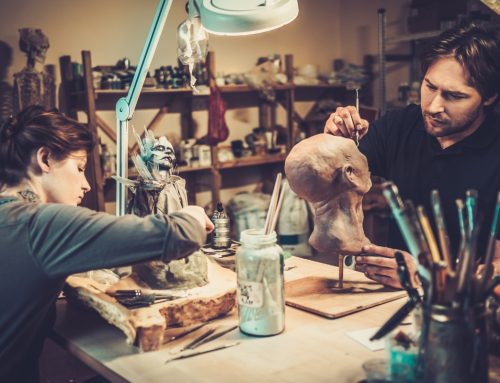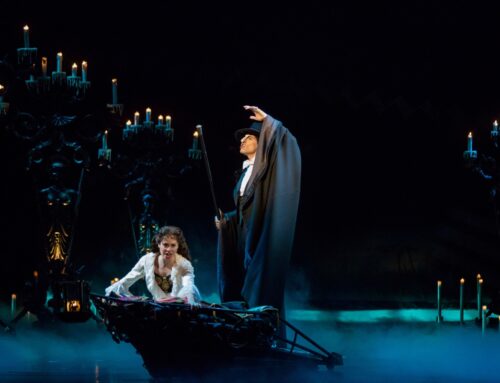Trying to explain the British art of pantomime to a newcomer will always be an uphill struggle. They’re so fundamental to our culture that we take their quirks and eccentricities for granted. Pantomimes and their cast of cliches, catchphrases, and characters deliver fun for all the family, and they’ve been doing so for centuries (Oh no, they haven’t! (Oh yes, they have!)). The figure of the panto dame, in particular, demands attention. The dame transcends individual plays, standing at the forefront of each production, often beyond the main characters themselves. Understanding the history of panto dames helps us understand why they’re so close to our hearts, while also preparing us for the dame’s theatrical costumes in next season’s panto romps.

What Is a Panto Dame?
Panto dames present a complex yet immediately accessible genre of characters. At her essence, the panto dame embodies an older female character, played by an older male actor. They play a colourful exaggeration of femininity, while drawing attention to their own masculinity, often with stubble and innuendo. Exuding camp lewdness, they often flirt with the play’s main characters while connecting with the audience and breaking the fourth wall. In that sense, the dame’s an every-man, the conduit between the audience and the plot.
They’re often played by celebrities and local heroes in the national-treasure category. Matching massive dresses with stocky builds and rouge, panto dames walk a line only echoed in the queer and drag communities. Uniquely, they walk this line with universal acceptance, at the heart of British tradition. They’re a dynamic, wholesome, and boundary-pushing character, they’ve been evolving since the history of panto dames began.
The History of Panto Dames
Panto dames, in one shape or form, date back to the first recorded dramas in ancient Greece. Both tragedies and comedy plays used male actors to play female characters, using wooden prosthetics to exaggerate their body shapes, while the famous comedy and tragedy masks exaggerated their expressions. Of course, pantomimes in general and panto dames, in particular, trace their history to the comedic tradition. During the Renaissance, Greco-Roman culture returned to Europe with a bang, bringing camp-gendered performances back to the mainstream stage. Starting in Italy with the Commedia Dell’Arte, traditions around cross-dressing, clowning, and comedy combined and spread to the UK.
Many of Shakespeare’s plays, including Twelfth Night, The Merchant of Venice, and As You Like It, incorporate cross-dressing into their romantic plotlines. Female characters, played by male actors, dress as men, adding layer upon layer of gendered performance. However, the history of the panto dame hits a new gear in the 19th century, crystalising into a distinct on-stage staple.
Panto Dames In The 19th Century
Panto dames took centre stage in the 19th century and the Victorian era. Modern dames evidence this fact, retaining the massive crinoline skirts and petticoats, the lead-white makeup, and the crimped up-do hair of a Victorian lady.
Joseph Grimaldi channelled the first recognised comedy dame in history through his Clown character in the play Harlequin and Mother Goose in 1806. The play ran for 92 nights, setting the stage for the golden era of panto dames.
The history of panto dames rose from strength to strength throughout the century, culminating in the famous Widow Twankey character from a reworking of Aladdin in 1861. Twankey takes her name from a cheap-and-cheerful brand of tea from the Tuan Key region in China, highlighting the panto dame’s working class and parodic roots.
How The History of Panto Dames Shapes the Future
In recent years, pop culture darlings like Paul O’Grady, Les Dawson, Christopher Biggins and Sir Ian McKellen joined the panto dame hall of fame, paving the way for dames of the future. As new theatrical costumes, new actors, and new degrees of gendered play emerge, who knows what the future holds?





